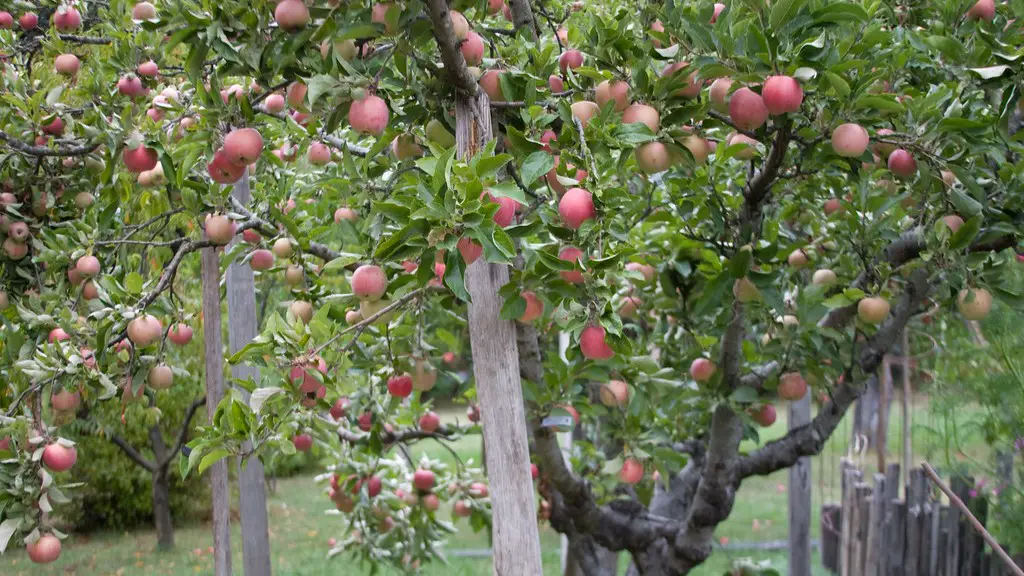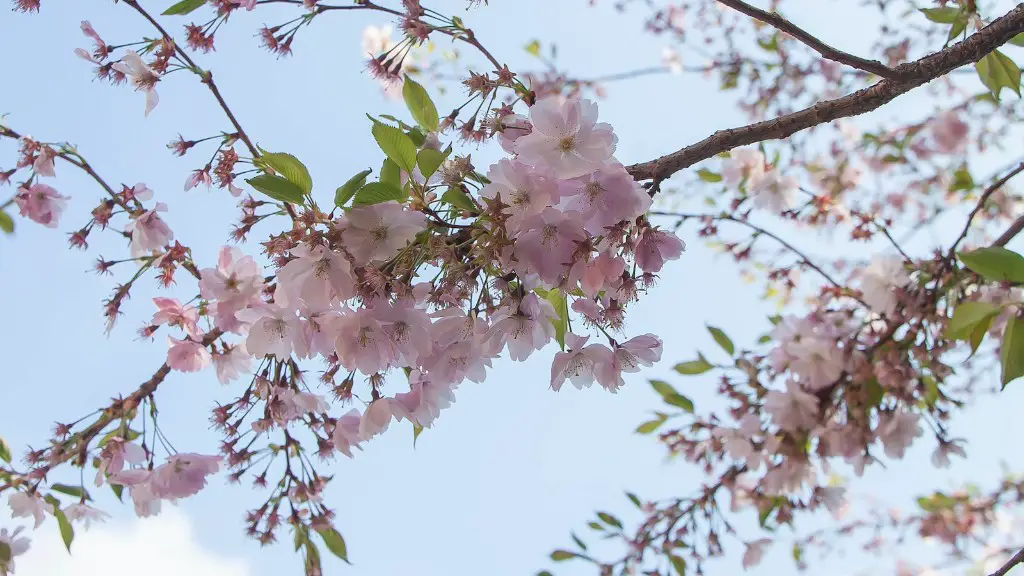Watering an indoor palm tree is easy to do, but it’s important to know how often to water it. The frequency of watering will depend on the type of palm tree, the size of the tree, the potting mix, and the environment where the tree is kept. For example, a small palm tree in a pot with well-drained soil may need to be watered only once a week, while a large palm tree in a pot with poorly drained soil may need to be watered twice a week. If you’re not sure how often to water your palm tree, ask a nursery or garden center employee for advice.
Indoor palm trees should be watered every week or two, depending on the size of the tree and the pot it is in.
How much water do indoor palm trees need?
Palms like soil that is moist, but not too wet. Once they are established, water them when the top inch of soil is dry. If you let the soil dry out completely, the leaf tips will begin to turn brown.
If you’re not sure whether your palm needs water, stick your finger in the soil to a depth of a couple inches. If the soil is dry, give the palm a thorough watering. If the soil is moist, then the palm doesn’t need any water.
Should I cut off brown palm leaves
If you notice that your tree’s leaves are starting to turn brown at the tips, it’s important to take a closer look to determine the cause. Sometimes, leaves can turn brown due to stressors like extreme weather conditions or pests. If this is the case, with some proper diagnosis and care, the leaves should be able to recover. However, if the leaves are fully brown, dead, or dying, it’s acceptable to go ahead and trim them off. As with any tree, you never want to trim too many leaves at one time, as this could over-stress the tree.
If you want to keep a palm indoors, it is important to provide bright, indirect light and keep the soil moist most of the time. You should also ensure there is some humidity in the air, and keep the palm away from cold drafts and blasts of dry, conditioned air.
What does an overwatered palm look like?
Overwatering your palm tree can lead to a number of problems, including drooping leaves, black spots on leaves and stems, mold on the surface of the soil, and yellowing leaves. If you see any of these signs, it’s important to take action to correct the watering issue.
Palm plants need a delicate balance of moisture and humidity to stay healthy. Keep your palm plant moist by misting the leaves or placing them in a room with a humidifier. However, palm plants are susceptible to root rot when exposed to too much moisture, indicated by yellowing leaves. Be careful not to overwater your palm plant to avoid root rot.
How long can an indoor palm tree go without water?
Most palm trees can go without water for at least two weeks. This can vary depending on the type of tree. Your palm tree can also last longer without water if you’ve used some advanced system like capillary matting or a bunch of wicks. For best results, you can keep your indoor palm in a terrarium.
Palms are like people—they suffer in dry conditions. If your palm is looking unhappy, misting them a couple of times a week, or adding a humidifier nearby will help. If the humidity drops too low, particularly during winter, fronds can start to crisp and die.
How many minutes should I water my palm tree
Another way to water your palm tree is use a slow drip system. This is where you slowly drip 20 gallons of water over the course of 1-2 hours. This allows the water to seep into the ground and directly to the roots of the palm tree.
If your indoor Palm Tree’s leaves are turning brown or yellow, it is likely due to inconsistent watering or unfiltered tap water. The best solution is to create a watering schedule to help keep the tree healthy and stress-free.
Why does my indoor palm have brown tips?
If you notice that a palm tree leaf is browning, it is likely due to the leaf reaching the end of its natural life. The leaf will turn brown from the tip and continue browning until the entire leaf is brown and drops off. If only one or two leaves are browning and new foliage is still growing, then the browning is natural and not a cause for concern.
If you see that the top center stalks of your palm tree are turning brown and/or shriveling, this is a sign that your tree is not healthy. Take a closer look at the tree to see if there are any other signs of illness, such as yellowing leaves or spots. If you notice any of these signs, it’s best to consult with a professional to get an expert opinion on how to best care for your tree.
Where should you put a palm tree in your house
Most palms like evenly moist soil and bright, indirect light when grown indoors. A west- or south-facing window is a great choice for growing palms near, but not where the sunbeams will directly hit the plants.
If you’re looking for a way to improve the air quality in your home, consider getting a palm tree! Palm trees are known for their ability to filter out large amounts of formaldehyde and other common pollutants, making them a great choice for homes with allergies or sensitivities. Pygmy date palms and bamboo palms are two of the most effective varieties for air purification, so be sure to check them out!
How do you water a potted palm tree?
Watering your plants deeply and thoroughly will promote healthy root growth. Container palms, in particular, may need extra attention since they are exposed to sun and wind and can dry out quickly.
If you see browning leaves on your plant, you can determine if it is underwatered or overwatered by feeling the leaf. If the leaf feels crispy and light, it is underwatered. If the leaf feels soft and limp, it is overwatered.
Warp Up
How often you water your indoor palm depends on the potting mix, temperature and humidity, and the size and type of pot. The average indoor palm needs about 1 inch (2.5 cm) of water per week.
It is important to water your indoor palm tree regularly, about once a week or when the soil is dry. Try to maintain an even moisture level in the soil to keep your palm tree healthy.





